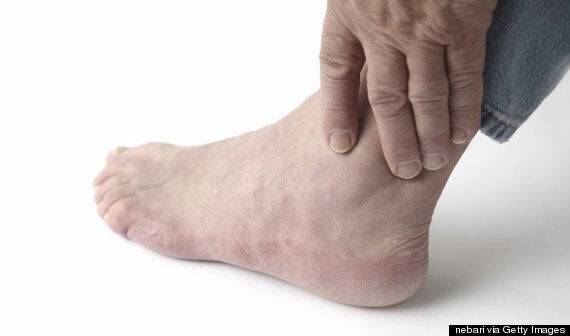Gout may be something we associate with history lessons at school, but in reality the amount of people being diagnosed with the condition is on the rise.
New figures show hospital admissions in England for the painful condition have risen by a fifth in the last five years, according to the Health and Social Care Information Centre (HSCIC).
In the past, the painful illness has been dubbed "the disease of kings" as a number of monarchs are thought to have been affected, including Henry VIII.

The most common symptom is a sudden and severe pain in the joint along with swelling and redness. It is a type of arthritis where crystals of sodium urate form around the joints.
According to the NHS, these are the other most common gout symptoms:
- Your joint being very tender, to the point of being unable to bear anything touching it.
- Swelling (inflammation) in and around the affected joint.
- Red, shiny skin over the affected joint.
- Peeling, itchy and flaky skin over the affected joint as the inflammation subsides.
Men are most commonly affected, and other factors that increase a person's risk include their age, being overweight or obese or having high blood pressure or diabetes.
New figures from the HSCIC show that the number of admissions where gout was the primary diagnosis have increased from 4,757 in 2009/10 to 5,793 in 2013/14 - a 22% rise.
Seven in 10 patients were above the age of 60 and two thirds of those admitted were male, the HSCIC said.
Experts noted wide regional variations in the number of admissions. In Greater Manchester 15 people out of every 100,000 have the condition while in Thames Valley, just eight out of every 100,000 are affected.
People living in the poorest places are also more likely to be affected, with 13.5 out of every 100,000 people living in the most deprived areas of the country affected compared with eight out of every 100,000 in the richest places.
SEE ALSO:
Gout Sufferers Will Be More Likely To Experience Erectile Dysfunction, Scientists Find
Yoga For Arthritis: Regular Practice Can Reduce Pain, Stiffness And Feelings Of Depression
The figures were released as part of a new HSCIC report of the provenance of Victorian conditions that were widespread during the 19th and 20th centuries.
Kingsley Manning, chairman of the HSCIC, said: "It is fascinating to look at current statistics for some of the diseases and conditions that were prevalent in the 1800s and early 1900s.
"We are fortunate that these diseases are not as widespread today, however our figures do show that hospital admissions for gout are increasing.
"Healthcare organisations may be interested in undertaking further study into the trends highlighted in our report."